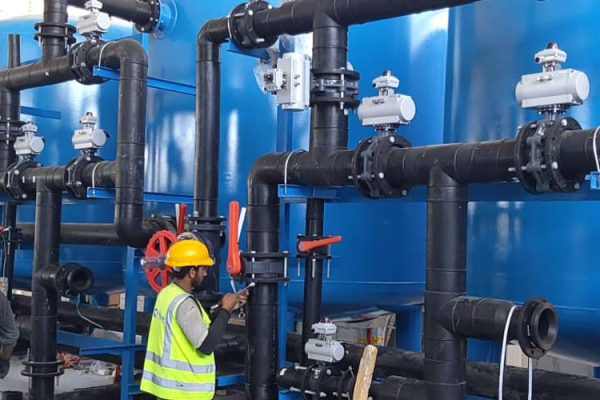
A Guide to HDPE Fabrication and Customization in the UAE: Tips and Tricks
The process of HDPE fabrication and customization in the UAE requires careful attention to material properties and handling techniques. HDPE (High-Density Polyethylene) responds uniquely to different fabrication methods for HDPE fittings, making it essential to understand its characteristics before beginning any project. Temperature control plays a crucial role in successful fabrication, as HDPE requires specific heat ranges for optimal workability and final product quality.
Essential Techniques for Successful HDPE Welding
Welding represents a fundamental aspect of HDPE fabrication and customization in the UAE, requiring precise temperature control and proper surface preparation. Each welding technique, whether butt fusion or extrusion welding, demands careful attention to heating times and cooling periods. The quality of welds significantly impacts the final product’s durability and performance, making proper technique essential for successful fabrication outcomes.
Managing Temperature in HDPE Processing
Maintaining proper temperature control throughout HDPE fabrication and customization in the UAE ensures optimal material performance. The local climate presents unique challenges, requiring careful monitoring of ambient temperatures and their effect on the fabrication process. Temperature management affects everything from material handling to welding and final product cooling, making it a critical factor in successful HDPE fabrication projects.
Preparing and Cleaning Surfaces
Proper surface preparation significantly impacts the success of HDPE fabrication and customization in the UAE. Clean, contamination-free surfaces ensure strong bonds during welding and proper adhesion during other fabrication processes. The dusty environment common in the UAE requires extra attention to cleaning procedures, making thorough surface preparation essential for quality results.
Determining Techniques for Complex Shapes
Creating custom HDPE components requires specialized knowledge of forming techniques and material behavior. HDPE fabrication and customization in the UAE often involves producing unique fittings for specific applications. Understanding how the material responds to different forming methods helps achieve precise dimensions and maintain structural integrity throughout the fabrication process.
Focusing on Quality During Fabrication
Implementing proper quality control measures ensures consistent results in HDPE fabrication projects. Regular testing of welds, checking dimensional accuracy, and monitoring material consistency of HDPE fittings help maintain high standards throughout the fabrication process. These quality control steps prevent costly errors and ensure finished products meet specified requirements.
The UAE’s climate presents specific challenges for HDPE fabrication processes. High temperatures and humidity levels can affect material behavior and fabrication outcomes. Understanding how environmental factors impact HDPE properties helps maintain consistent quality in fabricated components while ensuring optimal performance in final applications.
Using the Right Tools
Proper tool selection significantly influences the success of HDPE fabrication projects. Different fabrication techniques require specific tools and equipment, each demanding proper maintenance for optimal performance. Regular tool maintenance ensures consistent quality and prevents fabrication issues that could compromise final product integrity.
Storing HDPE Fittings the Right Way
Proper storage and handling practices protect HDPE materials from damage and contamination before and during fabrication. The UAE’s climate requires specific storage considerations to prevent material degradation and maintain optimal fabrication conditions. Understanding proper handling techniques helps preserve material quality throughout the fabrication process.
Conclusion
Success in HDPE fabrication and customization in the UAE depends on understanding material properties, maintaining proper fabrication techniques, and implementing appropriate quality control measures. Attention to environmental factors, proper tool selection, and careful material handling ensures consistent, high-quality results in HDPE fabrication projects. These considerations, combined with proper technique and quality control, help achieve successful outcomes in custom HDPE component production.

